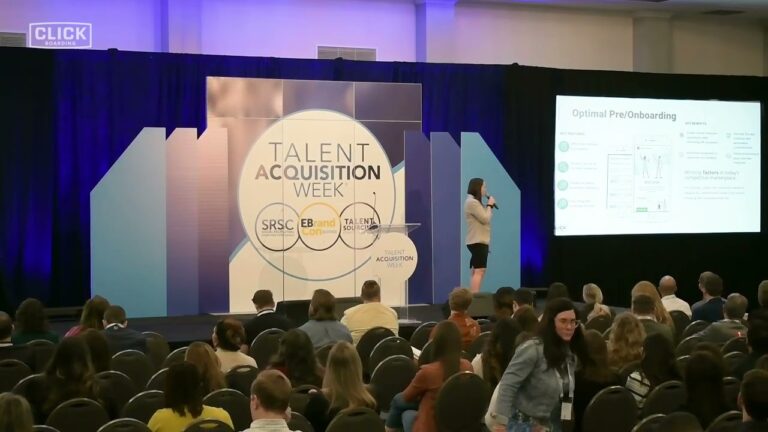Let’s pretend that I’m a candidate looking for a job at Acme Corp. In an ideal world, I’d find a job post online and apply. They’d carefully review my resume, then give me a call to set up a meeting and go over what I can expect in the interview. I’d get up early, get glam, and confidently meet with the rep who called me, the hiring manager (who was briefed before the meeting) and a few members from my soon-to-be team. They’d contact me immediately after the interview with feedback, and an offer a few days later. Then I’d be enrolled in their onboarding – where I go through the necessary paperwork, get introduced to the team, mission, values, culture, etc. etc. and start my life as a shiny new Acme Corp. employee.
Realistically though, that’s not what usually happens. It’s way more likely that I’ll struggle finding relevant open postings, sweat my way through the hiring process, curse recruiters for their inability to answer a SINGLE phone call, and then get dumped unceremoniously into the hiring managers lap with no desk, no laptop, and no clue.
Not cool. Especially when 90% of employees decide whether they’ll stay at an organization, or leave, in the first six months.
New employees want to feel engaged with the organization and assured that they made the right decision, and HR wants to make the best choice and move on. After all, moving from one job to another is more than a little scary, and it takes a significant amount of time and effort to vet and hire qualified candidates. If the hire leaves in the first 6 months, then everyone has to start over at square one – wasting time, effort, and money in the process. (Replacing an employee costs around 16- 213% of annual salary depending on education and qualifications in case you were curious.)
So how do we make this process a little less painful and a lot more retention-focused? Easy. By keeping employee engagement and the employee experience top-of-mind. Not sure where to start? We’ve got you covered in three steps.
Step 1. Build a Consistent Employer Brand
Your employer brand is how you present yourself to prospective candidates. If you’re calling, texting, emailing or tweeting are you providing a clear and relevant message? Is that message consistent across all platforms? Even more importantly – does your employer brand match what happens past the recruiting phase?
If not, you need to reexamine the way you’re presenting yourself and adjust accordingly. If you’re honest and transparent with your employer brand, you’ll see a smoother transition from pre-hire to onboarding and beyond.
Step 2. Make engagement easy
For candidates, the hiring process is a window into what life will be like at your company. If things are complicated, confusing, or frustrating, the’ll disengage so fast it’ll make your head spin. Make it easy to stay involved.
Provide them with a centralized, mobile-friendly location to interact with your organization. Automate tasks, processes, communications and reminders to keep your organization – and their fabulous new job – top of mind.
Step 3. Give them the right information
Standardized government forms are an absolute necessity, but they don’t really help new hires prepare for their roles or develop deeper ties to your company. So why do employers stop there when it comes to onboarding? New employees need to know the who, what, when, where, why and how of their new position to feel confident about moving forward, and engaged with the organization. Take a look at your current process. Does it tell new hires:
- Where to be and when?
- Who they’re meeting with and what can they expect during those meetings?
- How they fit in the organization, their department, and their team?
If not, it’s time to re-evaluate. Providing this level of detail shows new hires that you’re invested in their success, and allows them to show up that first day ready and raring to go.
Pro-tip: If you continue the onboarding process through the first 8 months of employment, you can see increased retention, long-term engagement, and overall productivity.
If you put it all together and focus on maintaining an employee-centric process, then you’ll see prospects transition into new hires, and new hires transition into engaged employees that aren’t going anywhere anytime soon.
Want to improve your onboarding process? Take a look at our eBook or reach out to one of our onboarding gurus today!



